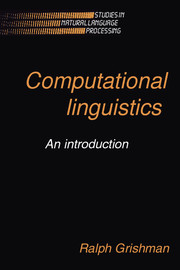Summary
The role of syntax analysis
Syntax analysis performs two main functions in analyzing natural language input:
Determining the structure of the input. In particular, syntax analysis should identify the subject and objects of each verb and determine what each modifying word or phrase modifies. This is most often done by assigning a tree structure to the input, in a process referred to as parsing.
Regularizing the syntactic structure. Subsequent processing (i.e., semantic analysis) can be simplified if we map the large number of possible input structures into a smaller number of structures. For example, some material in sentences (enclosed in brackets in the examples below) can be omitted or ‘zeroed’:
John ate cake and Mary [ate] cookies.
… five or more [than five] radishes …
He talks faster than John [talks].
Sentence structure can be regularized by restoring such zeroed information. Other transformations can relate sentences with normal word order (‘I crushed those grapes. That I like wine is evident.’) to passive (‘Those grapes were crushed by me.’) and cleft (‘It is evident that I like wine.’) constructions, and can relate nominal (‘the barbarians' destruction of Rome’) and verbal (‘the barbarians destroyed Rome’) constructions. Such transformations will permit subsequent processing to concern itself with a much smaller number of structures. […]
- Type
- Chapter
- Information
- Computational LinguisticsAn Introduction, pp. 10 - 89Publisher: Cambridge University PressPrint publication year: 1986



